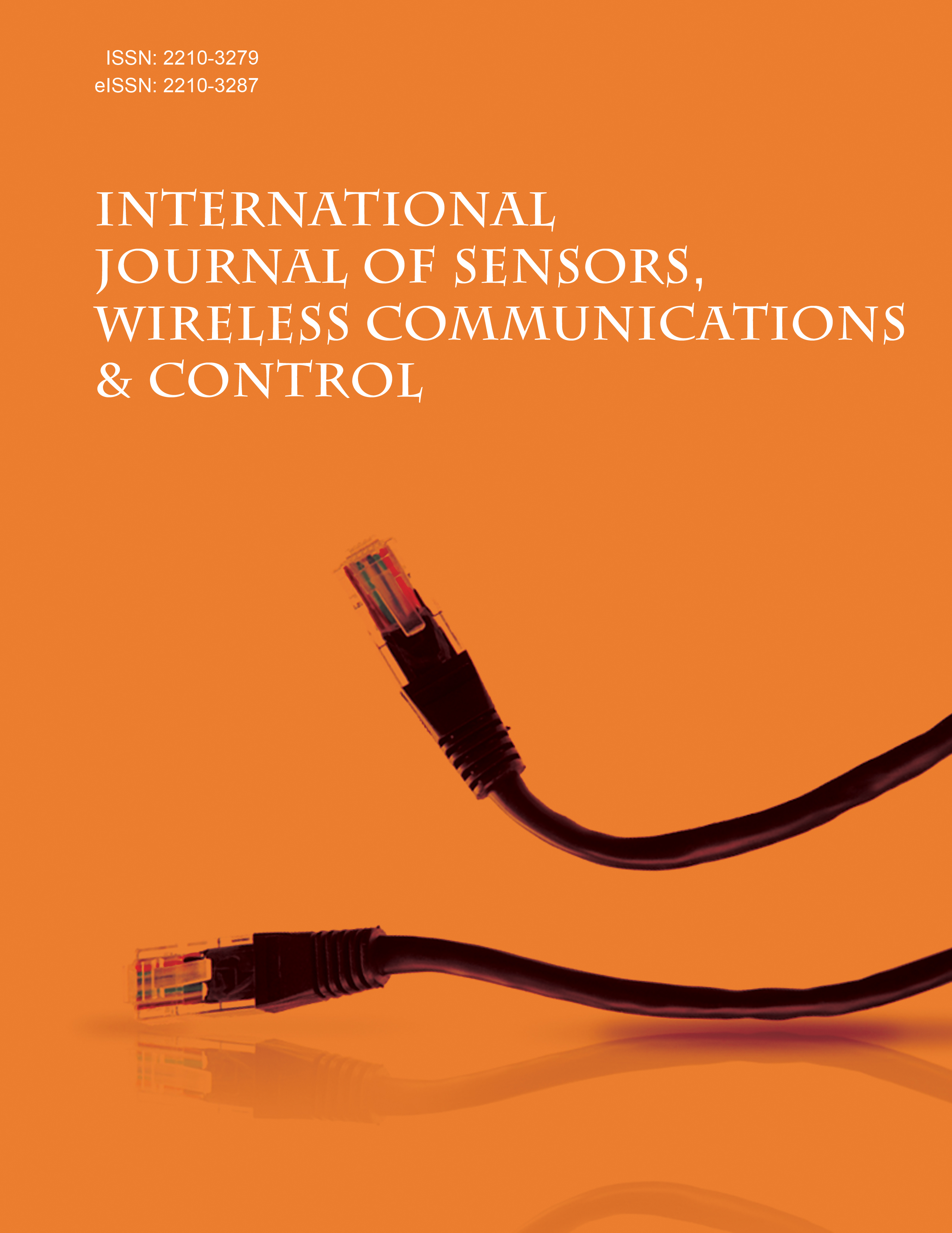- Home
- A-Z Publications
- International Journal of Sensors Wireless Communications and Control
- Previous Issues
- Volume 12, Issue 9, 2022
International Journal of Sensors Wireless Communications and Control - Volume 12, Issue 9, 2022
Volume 12, Issue 9, 2022
-
-
A Concise Review on Internet of Things: Architecture, Enabling Technologies, Challenges, and Applications
More LessAuthors: Manasha Saqib and Ayaz H. MoonBackground: With the advancements of ubiquitous computing, wireless sensor networks, and machine-to-machine communication, the Internet of Things (IoT) has become a constantly growing concept. The IoT is a new paradigm that interconnects all smart physical devices to provide smart services to users. It effectively delivers user-required services by utilising internet connectivity, sensors, and various technologies and pr Read More
-
-
-
A Solar, Thermal, and Piezoelectric Based Hybrid Energy Harvesting for IoT and Underwater WSN Applications
More LessAuthors: Suman Arora, Geeta Nijhawan and Gourav VermaBackground: There has been an increasing interest in the research community regarding the development of new energy harvesting systems/architectures for sensor networks deployed at critical locations. Various types of energy harvesting techniques like solar, thermal, aquatic, and wind energy harvesting systems are popular in the research community. It has been found in a survey that a single energy harvesti Read More
-
-
-
Capacity Maximization in Cell Free Massive MIMO Network with Access Point Selection Method
More LessBackground: Cell Free massive MIMO, containing a very large number of distributed access points (APs), which is a promising technology to provide high data rate, spectral efficiency (SE), and energy efficiency (EE). The system performance of cell-free M-MIMO is maximum when selecting optimal access points (AP) from the large number of APs. The linear precoding methods of zeroforcing (ZF) and minimum mean square Read More
-
-
-
Signal Assessment Using ML for Evaluation of WSN Framework in Greenhouse Monitoring
More LessAuthors: Aarti Kochhar, Naresh Kumar and Utkarsh AroraBackground and Objective: The deployment of a Wireless Sensor Network (WSN) provides a useful aid for monitoring greenhouse-like environments. WSN helps in achieving precision agriculture i.e. more yield can be produced with precise inputs. Before the deployment of a sensor network, it is necessary to explore the communication range of nodes. Communication signals are affected by losses due to stems, fruit Read More
-
Most Read This Month
Article
content/journals/swcc
Journal
10
5
false
en


